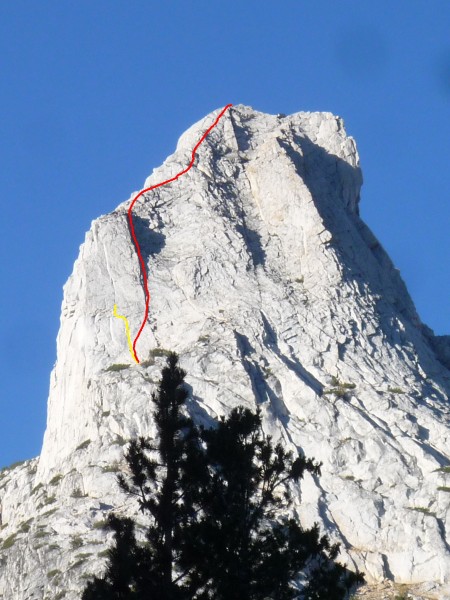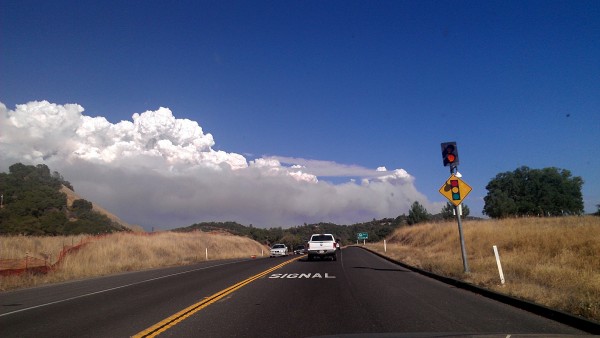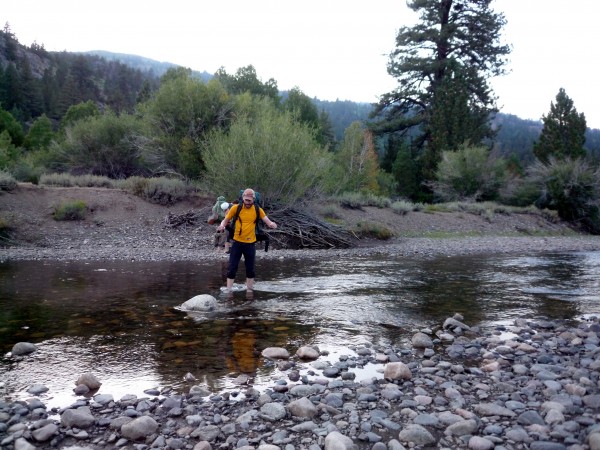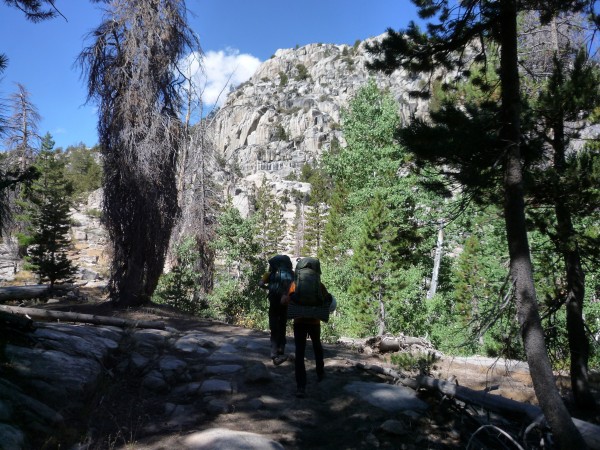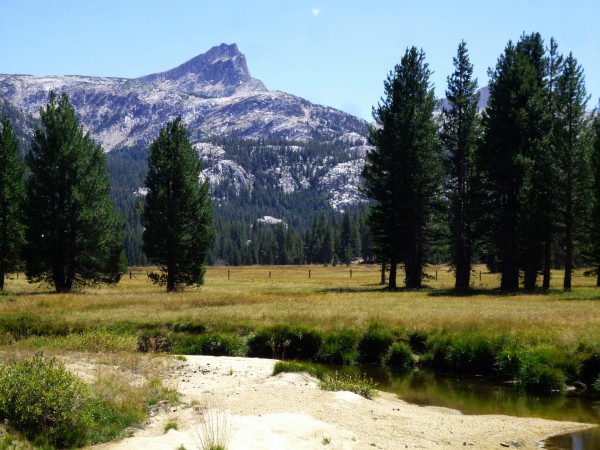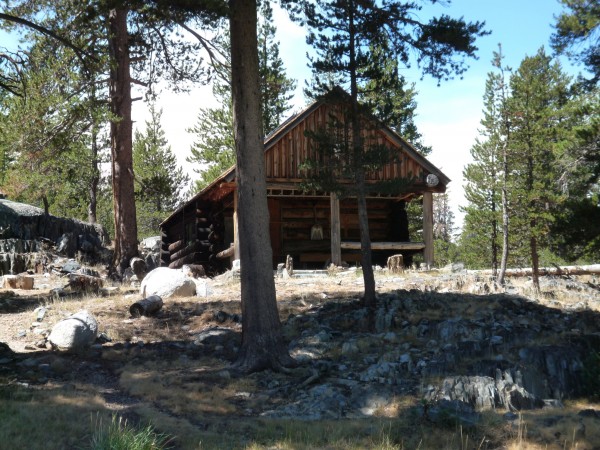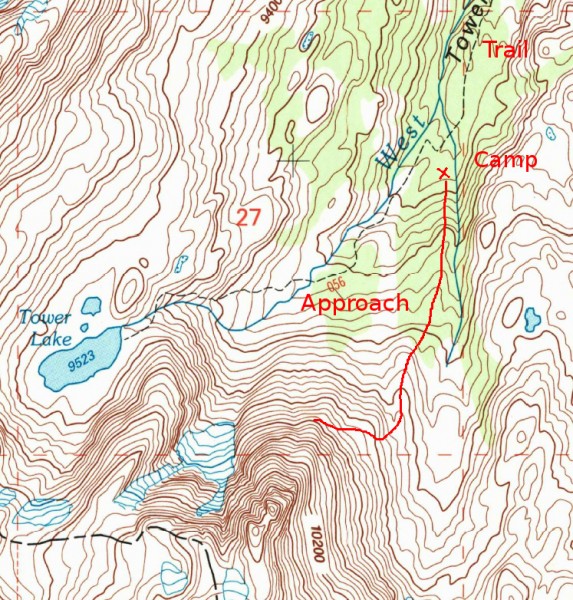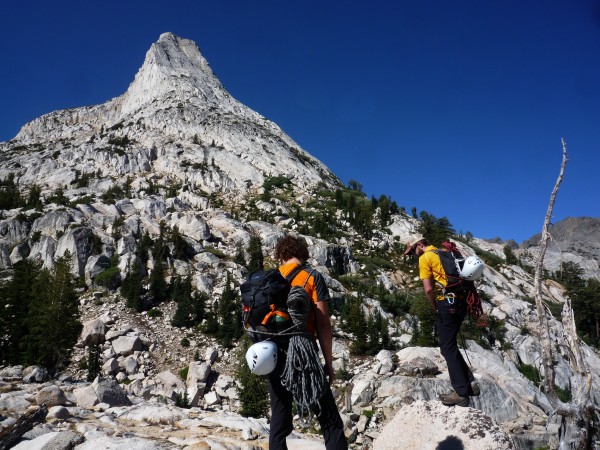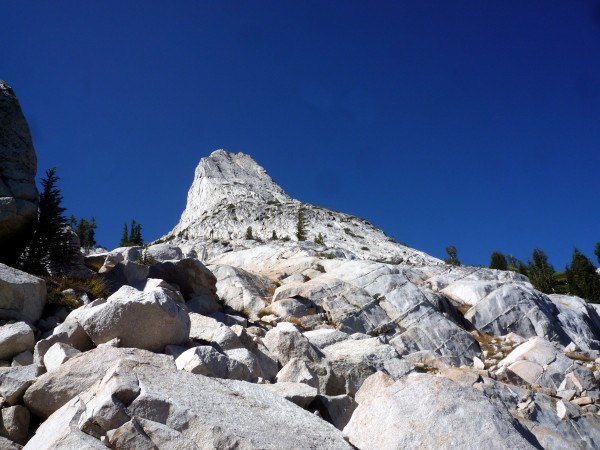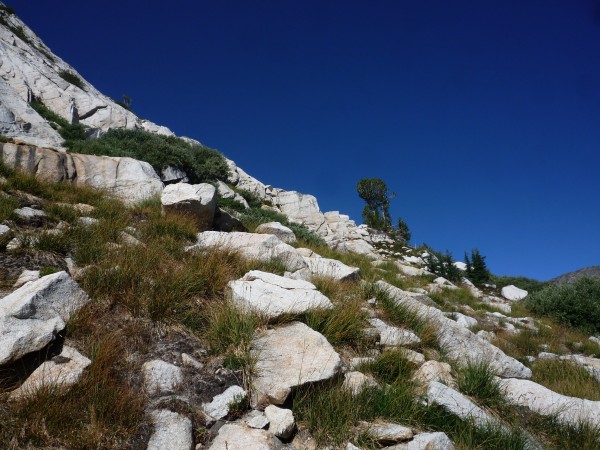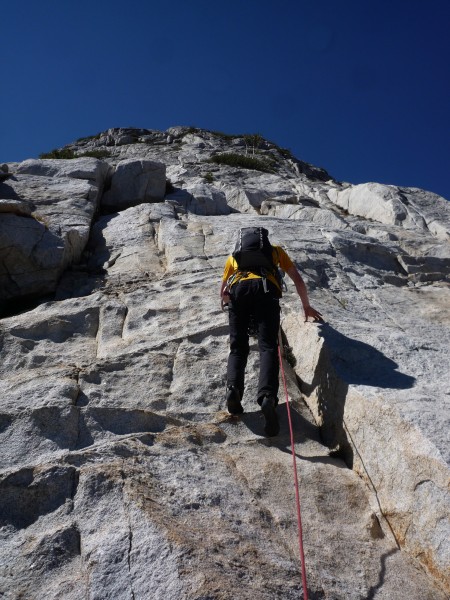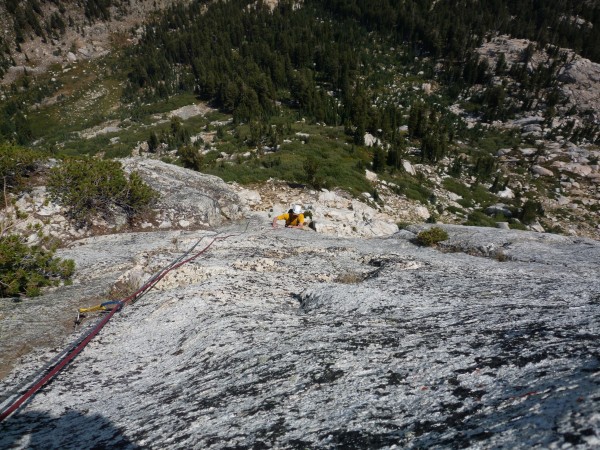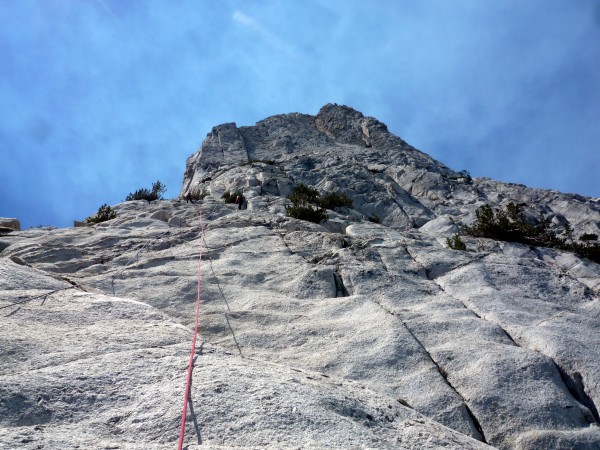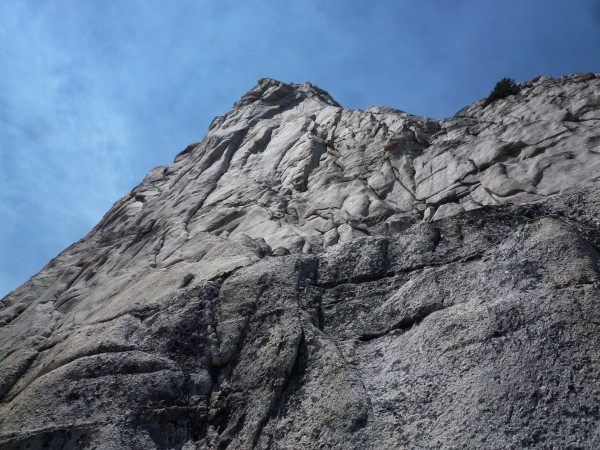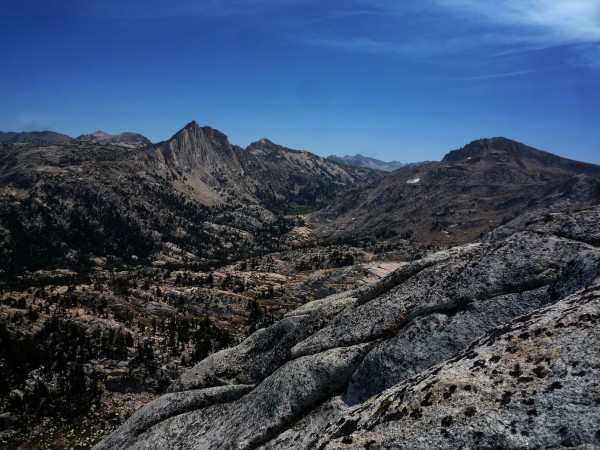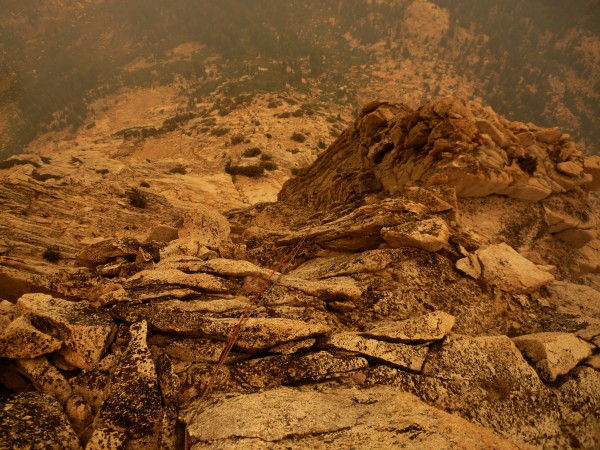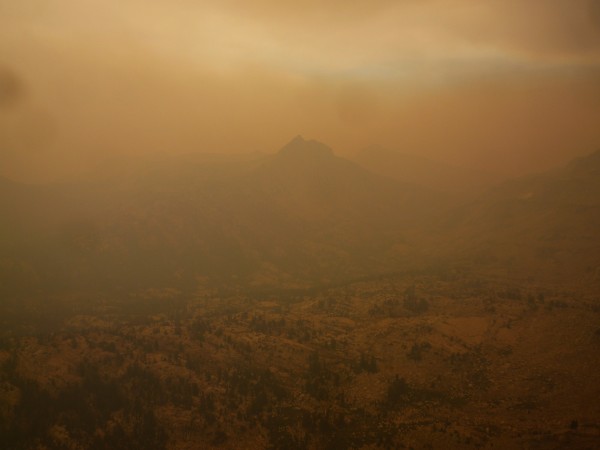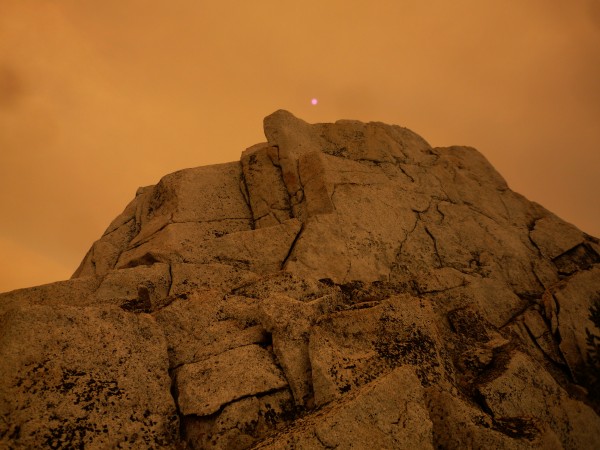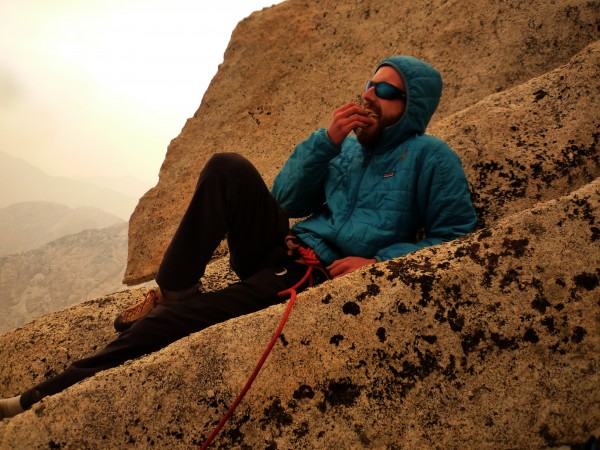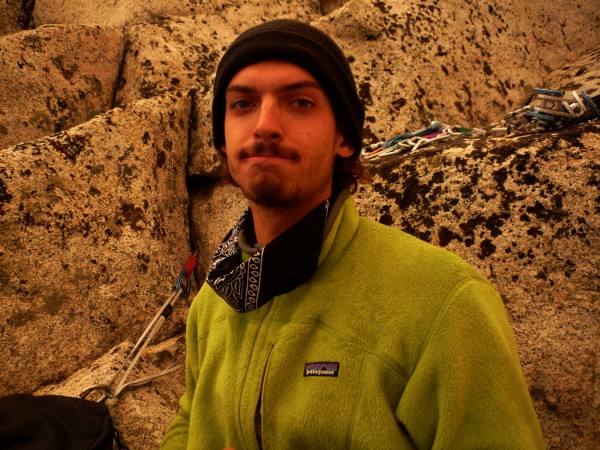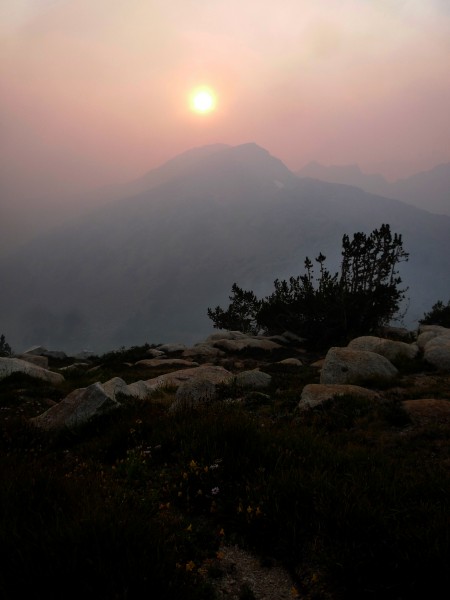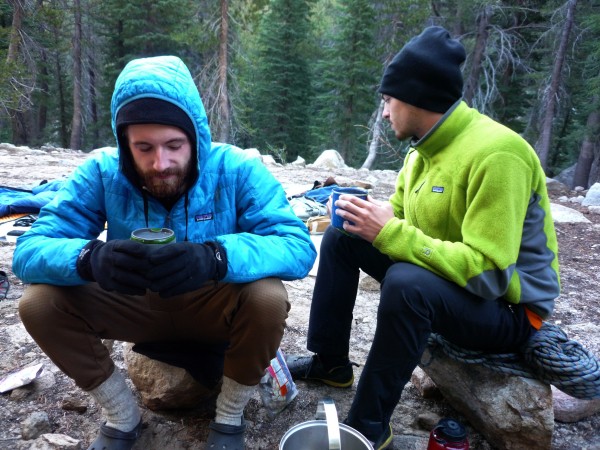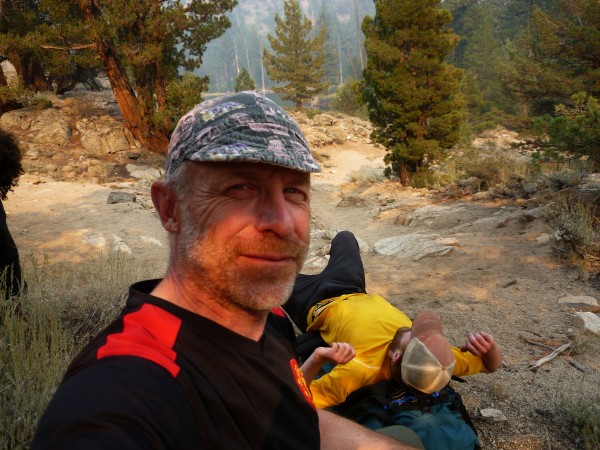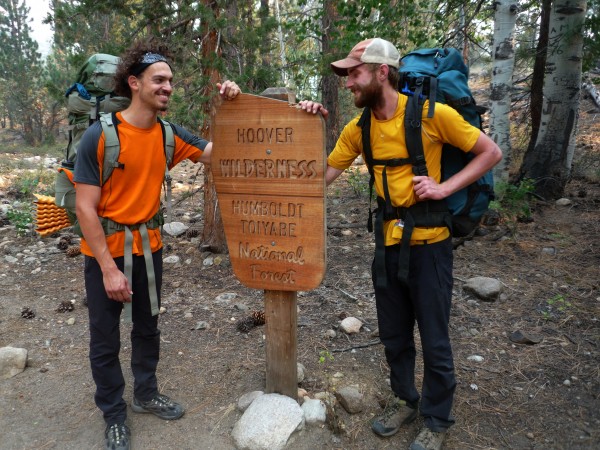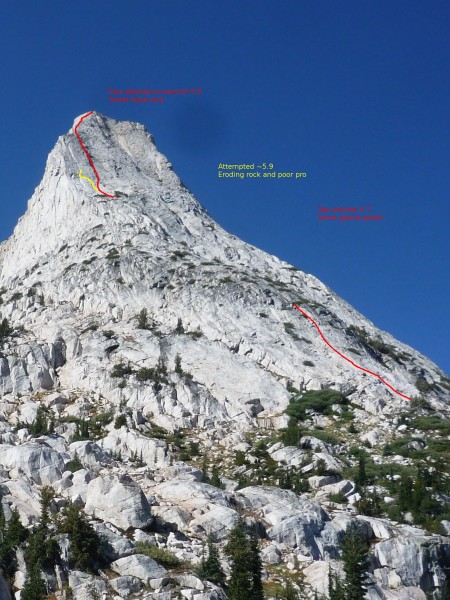A return trip.
When I first became interested in 5th class peak climbing in the Sierra Nevada, I picked up a copy of R. J. Secor’s 1992 book “The High Sierra: Peaks, Passes and Trails.” Secor follows what I believe is the Sierra Club habit of listing the high Sierra peaks from south to north. People in Tahoe may be disappointed to hear that mountaineers consider the northern limit of the Sierra to be the northern border of Yosemite National Park and Tahoe is not the High Sierra. The last peak listed in Secor’s book is Tower Peak (11,755’), the Northern limit of what is considered to be high Sierra mountaineering. Moynier and Fiddler’s 1993 book “Sierra Classics: 100 Best Climbs in the High Sierra” also included Tower Peak which further piqued my interest. Tower Peak is very remote, not often visited and offered routes from 3rd class scrambles to 5.9 grade III. I was hooked and wanted to go see it for myself.
In 2009 I finally decided to go to Tower Peak. I enlisted my climbing buddies Bob and Jay and started making my plans. However, the more I studied Tower Peak the more I became interested in the subpeak that sits on its north shoulder. The subpeak isn’t officially named but is generally referred to as Watchtower or Watchtower Peak. I have avoided calling it “The Watchtower” because Secor lists a peak in the Minarets by that name and there is also a rock tower in Kings Canyon that climbers refer to as The Watchtower. Watchtower Peak has two summits of about 10,900’ and my research found no record of any ascent of the northern most of the two. This became the focus of our 2009 trip which Bob has written up nicely here:
http://www.supertopo.com/tr/Watchtower-Peak-Hoover-Wilderness-Area-trip-report/t379n.html
We also submitted a report to the American Alpine Journal which, to our surprise, published it.
http://aaj.americanalpineclub.org/climbs-and-expeditions/north-america/contiguous-united-states-lower-48/california/2009-watchtower-by-d-merrick/
On that trip we made the first recorded ascent of the northern summit although people had no doubt visited it before.
In 2013 I decided to return and try yet another new route. My son Ford readily agreed to go and he invited his friend Spencer along too. We planned a Wednesday evening to Sunday evening trip which would give us plenty of time to make the long drive to Leavitt Meadows and the 14 mile hike each way. It also allowed for an extra day that we could use if we didn’t finish our route in one day or perhaps time to try something else.
Ford and I picked up Spencer in San Jose at 2PM on Wednesday, August 21 and headed for Sonora Pass. There had been thunderstorms in the high country for several days but they were supposed to clear up by Thursday but we still kept an eye on the weather. As we passed through the foothills we could see huge thunderheads directly over our destination and in front of the towering white clouds was the darker smoke of the Rim Fire burning near Yosemite.
Rim Fire report:
http://inciweb.org/incident/3660/
We arrived at the Leavitt Meadows trailhead, parked at about 7PM and decided to walk part way in that evening. There is a bridge over the West Walker River at the nearby campground but you can save about three quarters of a mile of walking if you wade the river next the trail head parking.
We walked to the stagnant Roosevelt Lake, ate dinner and sacked out. On Thursday morning we hiked the many miles up the river passing Lower Piute Meadows and lots of granite.
Arriving at Upper Piute Meadow is always a pleasure. The view looking south, up the meadow at Hawksbeak Peak is wonderful.
There is an old Forest Service cabin at upper Piute Meadow which must have been a fine place to spend the summer for some lucky ranger.
As we hiked up the meadow we came across a small cairn with a message that we could not decipher. I assume it wasn’t intended for us. Something about meeting at the river behind the hill.
Leaving Upper Piute Meadow we entered Tower Canyon and got our first close view of our objective.
We found a nice flat sandy spot to camp near a good water supply.
I spent Thursday evening figuring out the approach and after dinner we all needed some sleep after the long hike in. On Friday morning we made a somewhat less than alpine start.
Viewed from the approach, Watchtower Peak is pretty awesome. It really looks like a huge fang.
I had decided the day before that the Northeast Ridge route would begin at some small trees.
My son hasn’t done much leading on gear but I asked him if he wanted the honor of the first pitch and he didn’t hesitate a second. It went 190 feet and the boys decided it was 5.6.
The second pitch went a full 200’ crossing some glacial polish. The boys felt 5.8 would be a fair rating.
The slope eased off and we scrambled up a long section dragging the ropes.
At the top of the easy section I scrambled around to the left while the boys had a snack to have a look at the steep east face. There will be routes there one day.
The view to the east and southeast was great. You can see Matterhorn peak from here and of course Hawksbeak Peak.
From the top of the easy scrambling I wanted to stay close to the northeast ridge since that was the proposed name for the route so I headed up some features on the left side of a big, steep slab. It turned out that the rock in this area was eroding and what I thought would be a flake with good placements was flared with a tight crack at the bottom. I went up an edge of the flake and underclung where it arched to the left. The gear sucked and I didn’t think any of it would hold a fall. I got to where the edge went pretty much straight up and found a good alien placement just below a horn. Feeling reassured by the alien, I skipped slinging the horn and moved up. Above the horn I couldn’t get any gear in and the eroded granite surface was going to kitty litter on me. I kept moving up hoping for some good gear but didn’t find any before my left foot slopped off some loose grit and down I went. I really fear falling when I climb but when I do fall, it is anything but scary. I simply wondered how far I would fall and how bad it would be when I finally stopped. Luckily, I came to an abrupt stop long before I expected to. My last piece, the good alien, was just below my feet. Wondering what had held the fall, I looked up and saw that one of my ropes, I was using a pair of half ropes, was snagged on a little knob. The knob was too small to snag both ropes, perhaps too small to have snagged a single lead rope. When things get interesting, I always forget to take a photo but I really wish I had. The horn I had passed was right in front of me so I cut some cord to sling the horn and managed to place a small stopper next to the horn. While hanging from the stopper I untied from the two ropes and set up a rappel so I could go down and try something else. After getting down and pulling the ropes, I headed up to the right where there was an easier corner to work with. This spoiled my idea of a ridge route but so it goes.
After a couple more pitches and a fair amount of loose rock I found that we had been enveloped with smoke from the Rim Fire.
The view of Hawksbeak Peak was anything but clear now.
After another pitch, I was very near the top. The sun was barely visible just above the summit. The final roped pitch of six was a short 100 feet.
We topped out and signed the register that I had placed four years before.
After making the summit and figuring out the tricky descent, I walked to the south and got another photo of the steep east face.
We headed for Tower Pass and Tower Lake as the sun dropped out of sight.
We made it back to camp about 8PM, ate and sacked out. In the morning we had some tea and made our plans for our spare day. After a long lazy morning and a double ration of pop-tarts, the boys decided that hiking out would be the thing to do. This turned out to be the right decision since work had piled up and it allowed me to catch up on Sunday.
The 14 miles out was tough on the old man’s feet. I calculated that I have 13 years on the combined age of the boys.
We made it to the car by 7PM and were home before 11.
Watchtower Peak, Northeast ridge, 5.8, III, 6P
